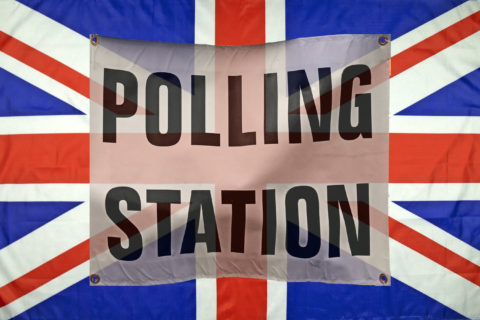Emotions are essential elements of brand communication and play a big role in consumer behavior such as consumption and decision-making. Today we know that thinking comes as a rationalisation of purchase which is actually triggered by emotions. Therefore emotions should be integrated to the marketing mix as a predictor of sales so that the communications content can be crafted more efficiently and effectively, knowing their impact on brand sales.
Our research aimed to find out the impact of emotions on brand sales by using social media as the source of emotion input. Since emotions are hard to elicit from self-reports, we passively tracked how people feel via their conversations on social media.
Measuring emotions on social media
We started with 7,1 million tweets posted between February 2016 and March 2018. The study required each of the tweets to be coded into at least one of 26 unique emotions (adapted from Izard’s Differential Emotions Scale) so that they could be integrated in marketing mix modelling as a parameter to identify the unique contribution of each. If done manually, this process would take approximately 10 years of work by 30 coders working 8 hours a day. Instead, we used the supervised machine-learning platform which took 48 hours to process the data.
First, we used a pool of 10,000 tweets and each tweet was coded manually in terms of its emotional load and this served as the learning base for the platform. At this stage each tweet was coded by at least three independent judges and into more than one emotion in order to capture the complexity of the social mood. After obtaining this learning base, it was embedded in machine learning and all 7,1 million tweets were coded in the same way into emotions automatically.
The study yielded important findings about the dynamics of emotions such as their differential frequency, how it changes by days of the week and time of the day, how they interact with each other and how they function in relation to brands and what exact sales contribution they bring to each brand analyzed. Below is a summary of some key messages from these findings and how the outcomes related to brand sales are executed.
Our key findings and messages
No “Positives” & “Negatives”, we should embrace the diversity of emotions: the usual practice of coding emotions has been to split them as positive or negative. Yet, emotions are far more complex than this. The study showed us that it is not a matter of valence, but it is rather about the unique emotion itself. For example, anger and sadness are both negative emotions but the study shows that anger draws back sales while sadness does not. When they are seen simply as “negative”, it is not possible to identify this impact. Therefore, relevancy for a brand is not about being positive, it is about the specific relevant emotion you evoke as a brand.
The idea of “Brand Relevancy” should be revisited: in this perspective, the brand relevancy should be achieved in two ways, simultaneously: First, the brand’s communication tone should match with the social mood and second, the brand’s emotions’ (embodied in brand personality) should match with the consumers’ emotions. For example, we may know that fun works for our brand and even if we launch the funniest campaign ever, yet the social mood is occupied with anger, our campaign faces the risk of being irrelevant, hence negatively affecting sales. Therefore, to achieve brand relevancy and assure communicational success, it is crucial to map how the emotions function in relation to each other and the brand.
The interaction of emotions is the real richness of human nature: Emotions are rarely felt in isolation and often co-occur. While some emotions stimulate each other (happiness promotes joy), some emotions inhibit others (happiness decreases anger). For example, in our study love is found to interact with sadness even more than happiness. A melancholic love seems to be a more common emotional path than a happy, cheerful love. Similarly, how people can shift from one emotion to another may not be smooth and direct. For example, we found that in order to shift from hatred to joy, the path is via pride and love. Emotions in cases of terrorist attacks is a good example of this: People first feel anger and hatred, then gather around the feeling of pride to stand against and be patriotic and later they move onto hope via love and respect for their country.
Each brand has a different pattern and path of emotions: Our study showed us that our brand sales are affected at different levels by different emotions (controlling for marketing mix elements such as promotions, TV GRP, brand equity, price etc.).
For example, for Carte D’Or, liking and admiration contributed 8% of all brand sales in addition to all other metrics of marketing mix. For Cornetto, love and fun were equally big contributors and for Magnum, it was mainly love which significantly affects the brand.
Mapping the emotions allowed us to craft one-sentence communication briefs which are fully efficient and effective. For example, if we take the case of Carte D’Or, based on our findings, the campaign is re-crafted to achieve a success story: Carte D’Or used to use mainly the product visuals in its ads, without any connection with the people. Finding out that liking and admiration were effective emotions for the brand, the ads are renewed with emotional load, making visible the people “enjoying” the brand. Product exposure is pushed back and product experience that elicits liking and admiration is pushed forward. This new campaign boosted Carte D’Or performance in terms of sales and equity, without any contribution of distribution improvement or price adjustment.
Similar actions are taken for Cornetto and Magnum, which also paid off in performance. Therefore our journey with emotions ended up better crafted communication decisions and absolute gains for the brands.
This project has breakthroughs in several ways:
- First, we tracked the social mood via supervised machine learning not based on valence but respecting the diversity of the unique emotions.
- Second, we explored the role of emotions on consumer behavior not at an individual level, but over time.
- Finally, we came up with a marketing mix model which takes into account the role of social mood in explaining sales, which made it possible to acknowledge the contribution of each emotion for a specific brand and therefore enable marketers to craft one-sentence briefs around these for their brand communication.
The key conclusion is that our brands have humans they are talking to, not consumers they are selling to. People are consumers during only a small part of the day, but they are humans all day. If we embrace this simple truth, we will connect to their emotions and then we can actually speak to them. This study has opened a new way to make this quantitatively possible so that this simple truth becomes an integral part of a marketer’s communication decisions.


